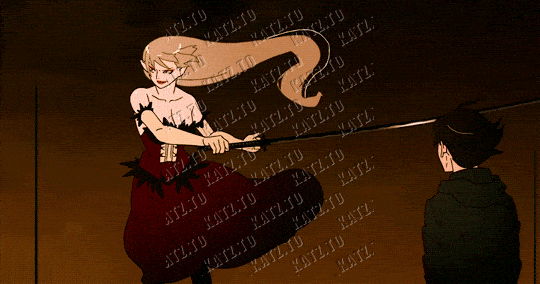- Joined
- Aug 24, 2023
- Messages
- 1,392
- Reaction score
- 33,905
- Points
- 113
- Location
- ꜱᴏᴠɪᴇᴛ ᴜɴɪᴏɴ [ᴜꜱꜱʀ]
- grants
- ₲30,449
2 years of service
- Thread Starter
- #1
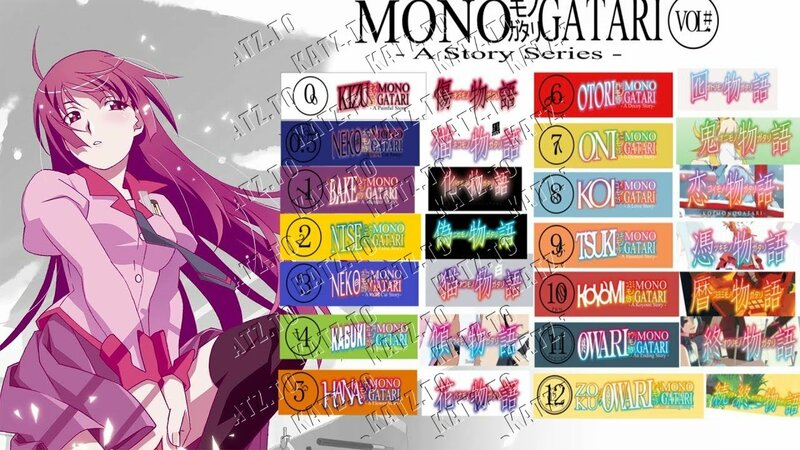
Synopsis
Kizumonogatari Part 1: Iron-Blooded During Koyomi Araragi's second year at Naoetsu Private High School, he has a chance encounter with Tsubasa Hanekawa, the top honor student in his class. When they strike up a conversation, Hanekawa mentions a shocking rumor: a vampire with beautiful blonde hair and freezing cold eyes has been seen lurking around town.Happy to have made a new friend, Araragi writes off the rumor and goes about the rest of his evening in a carefree manner. However, on his way home, he stumbles across splatters of blood leading down the stairs to the subway. His curiosity pushes him to investigate further, so he follows the gruesome pools into the depths of the station.
When he arrives at the source of the blood, he is terrified by what he sees—the rumored blonde vampire herself, completely dismembered. After she calls for his help, Araragi must make a decision, one which carries the potential to change his life forever.
Kizumonogatari Part 2: Hot-Blooded No longer truly human, Koyomi Araragi decides to retrieve Kiss-shot Acerola-orion Heart-under-blade's severed body parts that were stolen by three powerful vampire hunters. Awaiting him are Dramaturgie, a vampire hunter who is a vampire himself; Episode, a half-vampire with the ability to transform into mist; and Guillotinecutter, a human priest who is the most dangerous of them all.
Unbeknownst to Araragi, each minute he spends trying to retrieve Kiss-shot's limbs makes him less of a human and more of a vampire. Will he be able to keep his wish of becoming human once again by the end of his battles?
Kizumonogatari Part 3: Cold-Blooded After helping revive the legendary vampire Kiss-shot Acerola-orion Heart-under-blade, Koyomi Araragi has become a vampire himself and her servant. Kiss-shot is certain she can turn him back into a human, but only once regaining her full power.
Araragi has hunted down the three vampire hunters that defeated Kiss-shot and retrieved her limbs to return her to full strength. However, now that Araragi has almost accomplished what he’s been fighting for this whole time, he has to consider if this is what he really wants. Once he revives this powerful immortal vampire, there is no telling what she might do, and there would be no way of stopping her.
But there is more to the story that Araragi doesn’t understand. If a newborn vampire like him could defeat the hunters, how did they overpower Kiss-shot? Can he trust her to turn him back to a human? And how is that even possible in the first place? Araragi is at his limit but he must come to a decision, and it may not be possible to resolve this situation without doing something he’ll regret
Information: [3 parts movie]
Kizumonogatari Part 1: Iron-Blooded Jan 8, 2016
Kizumonogatari Part 2: Hot-Blooded Aug 19, 2016
Kizumonogatari Part 3: Cold-Blooded Jan 6, 2017
Genres: Mystery, Action, Supernatural
Characters
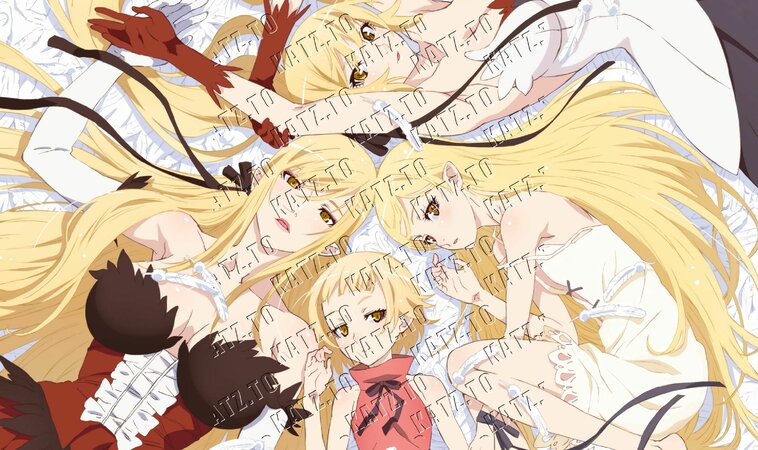
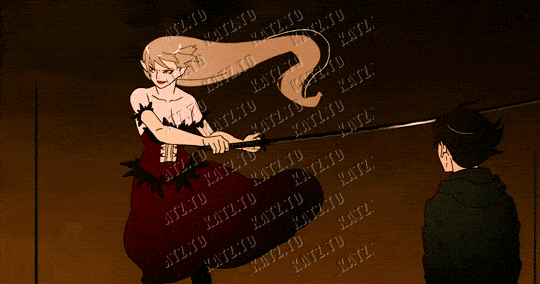
Shinobu Oshino is a mysterious vampire girl who acts as Meme Oshino's companion in the ruins of Eikou Cram School. Later in the series, she resides in Koyomi Araragi's shadow during the day. She was formerly a human child princess named Rola (likely meant to be Laura, Lola, or Lora in English, though it may reference the name Acerola) who was cursed into causing anyone in proximity to her to commit suicide. She then took the name of Acerola before meeting a purebred vampire that turned her into a powerful vampire named Kiss-Shot Acerola-Orion Heart-Under-Blade. She now takes the form of an eight-year-old girl with another new name after losing most of her powers. She is the titular protagonist of five main arcs: Shinobu Time, Shinobu Mail, Acerola Bon Appétit, Shinobu Mastered and Shinobu Suicide, and four minor arcs: Shinobu House, Shinobu Science, Shinobu Figure, and Princess Beauty.
Shinobu is a young female with yellow eyes, pointy ears, sharp fangs, and long blond hair which curls outward at the end. During the course of the series, she takes on several changes in appearance depending on how much of her vampire powers she possesses. Through most of the series, she assumes a younger form as an 8 year old. She wears a loose dress and a pair of sandals, with an aviator hat as an accessory in Bakemonogatari. As demonstrated in Nisemonogatari, she can suck blood to become older; she appears as a girl in her adolescent years, tying her hair into a ponytail and wearing a black camisole inside a purple jacket, a black skirt and black hosiery. In Kizumonogatari, obtaining her stolen body parts causes her to age, along with gradually transforming her clothes into an appearance similar to her adult form. Her true form as Kiss-Shot depicts a woman in her late 20's wearing a red and black dress.
After losing most of her vampire powers, Shinobu falls into a long period of stupor. She is frequently seen in Oshino's place with her hands tucking her knees in, her face always in an emotionless state. She often spends most of the day in one spot, doing mostly nothing with a bitter expression. Shinobu also does not talk to anyone, but she is familiar with Koyomi Araragi and Meme Oshino, and would follow requests from either of them. Later she reverts back to her brighter personality after "reconciling" with Koyomi. She is rather talkative, and often asserts her superiority through her archaic speech. She mostly plays with Koyomi's tendency to act as the follower between the two. Sometime after Koyomi Vamp, she appears to find a liking to Mister Donuts and they become her obsession. She refers to herself using "washi", which is often used in fictional settings to represent characters of old age. Shinobu holds affection for Koyomi stemming from him saving her in Koyomi Vamp. She is seen to show jealousy if he spends too much time around other girls or gets too close to those she does not like, notably Nadeko Sengoku. She is shown to be touched by Koyomi being willing to live and die with her, but as called out by Suruga Kanbaru, is initially unwilling to openly return the sentiment until months later in Ougi Dark. When her first minion Seishirou resurfaces, she is concerned that she might choose to return to Seishirou over Koyomi, still having some affection for him, but admits in the end that she wants to stay with Koyomi. Her liking for Koyomi leads to her desiring to restore their master-servant bond whenever it is broken, despite it restricting her abilities and movements. Due to being around Meme for many hours while performing her silent treatment, she's obtained a bit of knowledge about different types of oddities, and often helps out Araragi in his time of need, but she still remains as no expert. Shinobu very rarely refers to anyone by name, with Koyomi showing surprise that she called Tsukihi by hers in Tsukihi Phoenix. Instead she refers to most people by nicknames, such as calling Hitagi "tsundere girl".
She appears to be an eight year old girl, but was originally a beautiful vampire who had lived for more than 500 years. After the events of Koyomi Vamp, she was left in a weakened condition with no powers or traces of her original personality, and therefore had to abandon her "Kiss-Shot Acerola-Orion Heart-Under-Blade" name. Prior to being a vampire, she was a princess of unparalleled beauty. She was referred to as "Princess Beauty" or "Acerola" during this time, the latter being her original name. Eventually, she was turned into a vampire by Deathtopia to save her from the curse of beauty.

As a vampire himself, Dramaturgy comes from a network of oddity specialists that considers hunting vampires a necessity to keep ecosystems balanced, as opposed to trying to kill as many as possible.
His lineage is weak when it comes to regeneration. He has a fifty-three brethren of vampires and refers to himself as their "number one." He speaks a mysterious foreign language, though he can still speak Japanese. Events in Tsubasa Sleeping seem to imply he might be German, as he is found in the country and can speak the language.
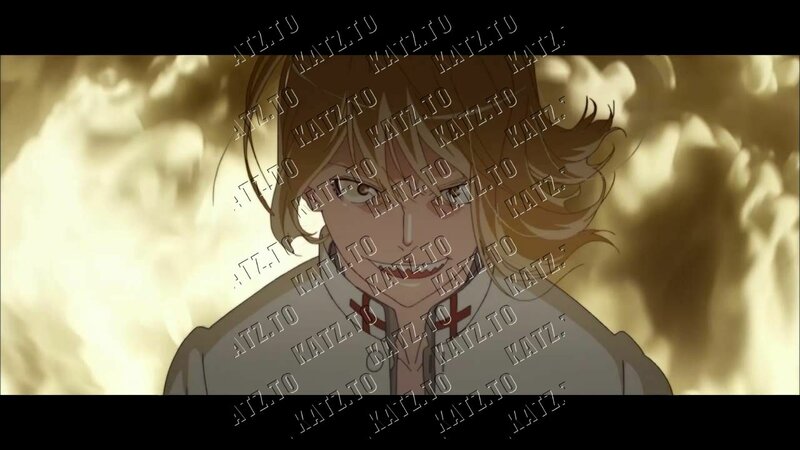
Episode is a half-vampire. Half-vampires, in exchange for an immortality that is weaker than that of a regular vampire, are characterized by not bearing most of a regular vampire's weak points. For example, they can walk under the sun and they can cast a shadow. Normally, half-vampires are not accepted in both humanity and oddity side, and his human father and vampire mother were exterminated by their respective races shortly after his birth. This circumstance leads Episode to hate vampires as well as humans. He acts not entirely because of work but also for personal feelings, so Meme Oshino warned Koyomi Araragi that he wouldn't easily give up like Dramaturgy. After his parents’ death, he was housed by Guillotine Cutter’s church, though he does not consider him as his godfather.
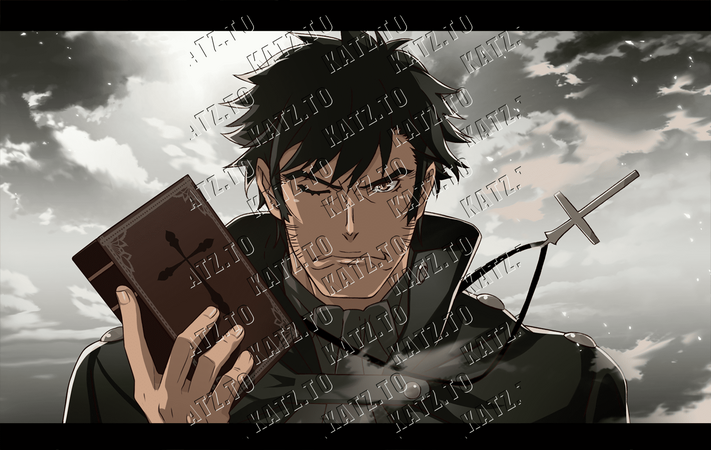
Guillotine Cutter denies and eliminates the existence of oddities. Koyomi describes him as a calm but dangerous person. While the only of the three vampire hunters that is not a vampire himself, Guillotine Cutter is not an average human as he was able to take both of Kiss-shot's arms. He refers to himself as God and will stop at nothing to accomplish his goals.
Part I: The Story
Kizumonogatari, at its fundamental core, is a story about the loss of humanity. There are literally seven character in the three films and you could quite easily place these characters on a ‘human-monster’ spectrum, and then track how Araragi moves along this spectrum as the films progress. At one human end there is most human, Hanekawa, probably followed by Oshino, and the other are the vampire hunters and Kiss-Shot.
How every character relates to and effects Araragi can be understood through how Araragi gets moved along this spectrum. Each of the fights can be understood as pushing him one way or the other. Equally, important conversations pull Araragi each and every way as he struggles with his own humanity and the gravity of the situation he is in. Subsequently, all of these characters can be understood as relating to his humanity in completely different ways.
But what exactly does this loss of humanity actually mean? Well, the most basic interpretation of this loss can be the loss of humanity to vampirism, in that by becoming less human, one becomes more vampiric. In this sense, the story is centred around Araragi and Kiss-Shot, and the story quite basically unfolds as follows:
The vampire Kiss-Shot is saved by Araragi. Araragi then wakes next to an innocent looking young girl, stripped of her vampiric abilities. Araragi now stands in her place as a vampire. So Kiss-Shot sends him on a quest to make her a vampire again, promising that by doing so he can become a human again.
Along his way, he has to fight three vampire hunters, each progressively less vampiric, with Dramaturgy being a full vampire, Episode being a half-vampire, and Guillotine Cutter being fully-human. Finally, the film concludes with a vampiric Araragi facing off against a vampiric Kiss-Shot and the film resolves by trapping them both in a state of being not quite human, yet not quite vampire.
Through this understanding, however, the struggle and tragedy of the films make little sense. The actual loss of humanity that Kizumonogatari explores is much more complex than this. It’s important to note that only one of the seven characters die in this film, and the death is used to demonstrate what humanity is actually at stake. Rather than the loss of humanity to vampirism, it’s the loss of humanity to becoming a monster, but by monster, the films mean someone that kills.
Quite ironically then, the humanity of these three vampire hunters is actually inverted by this understanding. While Dramaturgy is the most vampiric, he is the least monstrous. Episode is half-vampiric, yet attacks and nearly kills Hanekawa. In his willingness to do so, he is made out to be a monster. Finally, Guillotine Cutter kidnaps and is completely willing to kill Hanekawa in order to ensure victory, making him the most monstrous of the three. In turn, fighting each of these three progressively pushes Araragi further towards monstrousness himself, with each fighting pushing him close to this limit.
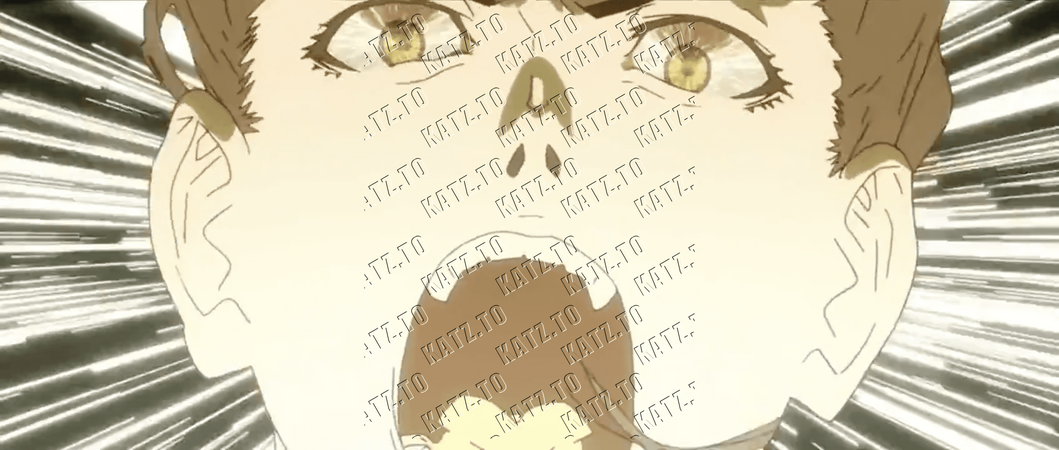
So if the vampire hunters are all pushing him one way, then Hanekawa is pulling Araragi the other way. Hanekawa is the idilic human. She’s more than human: absolutely saint-like and impossibly kind. Although not to excuse it, this idea even feeds into her exaggerated physical depiction. She doesn’t exist merely as a helpless princess for Araragi to save, but she acts to transform him and grant him strength as a human.
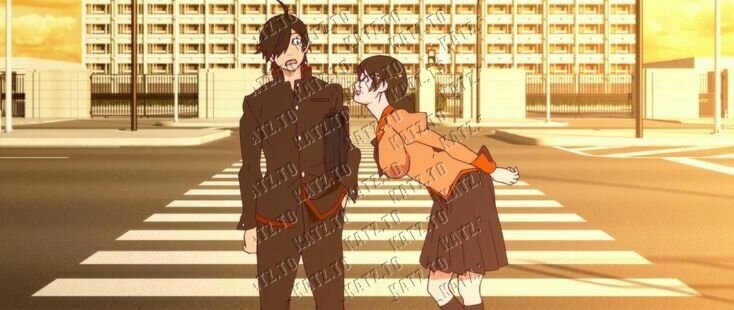
In Araragi and Hanekawa’s first encounter in Part I we understand that Araragi sees human connections as a weakness. When he sees his friends - if he had any - in pain it hurts him, when they cry he cries. He seeks this a weakness, and therefore remaining friendless allows him to be “stronger as a human.” In essence, he sees empathy as a weakness.
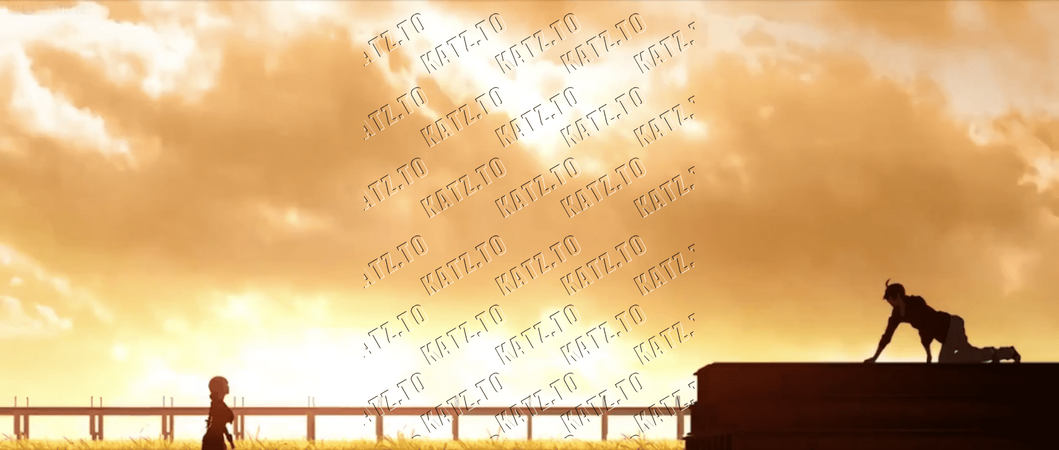
Part II: The Story
essentially tracks how Hanekawa changes Araragi. Araragi enjoys talking to her, but when he is trying to be stronger at the beginning of the film he pushes her away and deletes her contact information. By the end of their encounter in the wheat field, we see how meeting Hanekawa has brought about character growth for Araragi. “When you were wounded, it hurt like it was my own,” he tells her. He now understands that empathy is human and it what makes him stronger in these fights.This empathy, however, drives him too far and after he almost kills Episode and her kidnapping by Guillotine Cutter drives him to do something that is, as he says, “not human at all”. He tries to send her away to both protect her and protect himself.

Part III: The Story
is what stops him from killing himself and pushes him to fight for his humanity so he can see her again after Spring Break. In this moment Araragi sees himself as a monster for unleashing Kiss-Shot upon the world, and for every human she kills, he sees that it will be his fault. Suicide, in his eyes, is the only way to atone for such a sin.Hanekawa, however, pulls him down of this ledge. She tells him that she is willing to die for him. If he must eat, he can eat her. In this moment, Araragi reflects on her self-sacrifice through out the story and realises he can’t kill himself.
In the climax of the story, it is Hanekawa once again, putting herself in the face of danger, to stop Araragi from killing Kiss-Shot. In the moment before he kills Kiss-Shot, Hanekawa explains her and makes Araragi realises that killing Kiss-Shot too would make him a monster.
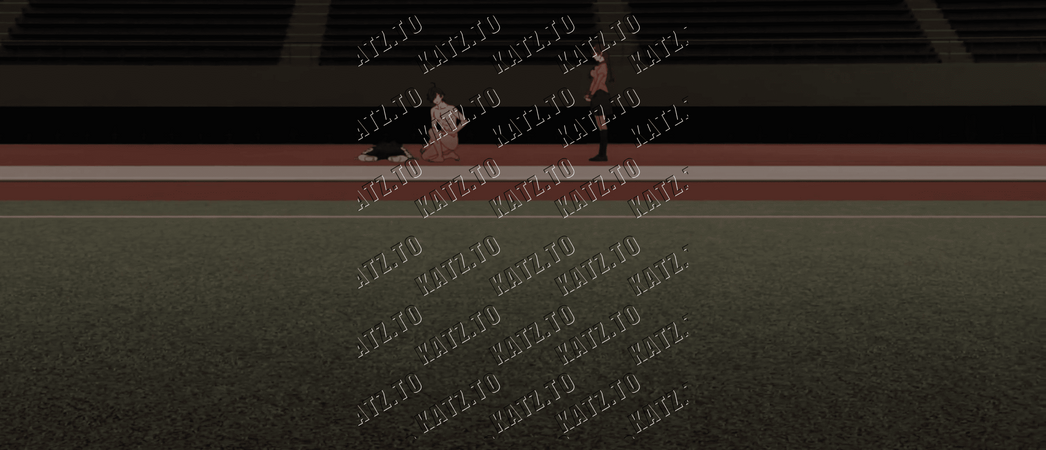
As a quick aside: I do have to mention that the aforementioned scene between Hanekawa and Araragi in Part III devolves into pure fan-service to the wider detriment of the film(s). There’s the vague justification that the breast-fondling shows that Hanekawa is willing to do anything for Araragi, and I suppose you could argue that there is some parallel between giving up her body physically and giving it up sexually. However, in my eyes the scene totally dehumanises Hanekawa. With Araragi forcing her to say the gross lines, the whole scene just left a really bad taste in my mouth. If Hanekawa is supposed to be the idilic human, objectifying her really undermines this. It’s also just a bit sexist. Anyway, moving on…
So it’s only though understanding of the importance of both forms of humanity that the films’ conclusion becomes so tragic. In Part III Kiss-Shot has quite literally grown-up and regained her full vampiric form, but in the eyes of Araragi she is yet to be a monster. In fact, the moment they share talking on the roof cements Kiss-Shot as a friend in his eyes – his only other friend aside Hanekawa.
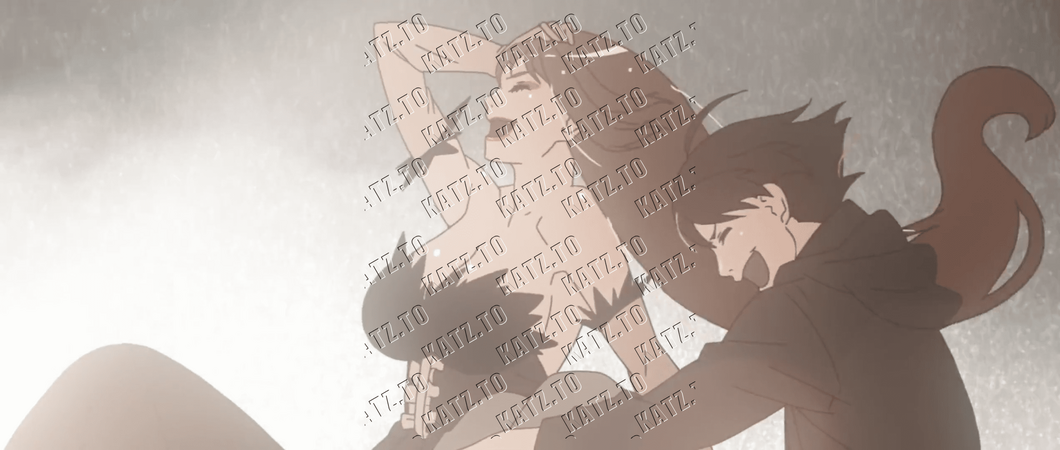
She’s transformed into a monster when she kills Guillotine Cutter and Araragi realises what he’s actually done. The only solution to prevent more death is to kill her, which leads to the climactic final battle. And the climax of this climax, is the moment Kiss-Shot lays on the ground and Hanekawa begins explaining.
In the moment I felt really mixed about Araragi's decision to not kill Kiss-Shot and restore his own humanity. I found it somewhat difficult to empathise with Araragi. It seems like a win-win; she wants to die and he wants to be a human.
But Araragi isn’t just someone who will do the right thing, he will do the rightest possible thing. During Second Season we see Hanekawa’s innocence and purity peeled away and in turn we come to learn that it is really Araragi who is unquestionably altruistic. In this, we the viewers might not perfectly empathise with Araragi’s justification - in his position, killing Kiss-Shot to regain his humanity seems like a no-brainer.
But for Araragi, killing her would mark the loss of his humanity too. Monsters kill people, and as much as she was a monster, Araragi comes to empathise with her as she lies there crippled and Hanekawa explains her motivations. Kiss-Shot’s willingness to sacrifice herself echoes not only his own willingness to die for her at the start of the films, but Hanekawa’s own willingness to die for Araragi, thus humanising her once more for Araragi.
There is no win-win, but Oshino presents the lose-lose, thus making this their great tragedy, forever linking them through their wound tale. By damning them both the an existence of not-quite vampire, not-quite human, Araragi is cursed with a twisted irony: he gave up being human to save his humanity.
Part II: The Production
The first thing to note about Kizumonogatari is that it is markedly different from all other entries into the Monogatari Series. And I don’t just mean visually. Kizumonogatari not only looks and sounds different, but it’s founded on a completely different way of telling a story.A phrase that gets thrown around a lot in discussions about Monogatari is ‘dialogue-rich’. And this is true; Monogatari is, without a shadow of a doubt, very ‘dialogue-rich’. But ‘dialogue-rich’ is just a nice way of saying that a lot of the show features two or more people expositing at each other. A huge part of dialogue writing is exposition and explanations and talking-at, rather than talking-with. This ain’t a bad thing at all. No, it’s actually at the heart of what makes the Monogatari Series… well, Monogatari.
Kizumonogatari, however, isn’t really ‘dialogue-rich’. In fact, the dialogue is a lot more… normal. The ‘show don’t tell’ mantra that Monogatari fiercely disobeys, is more adhered to here. There’s exposition, sure. But the script is written so people have actual conversations. And the animation is utilised in tandem with the spoken.
Something I’ve noted before as characteristic of SHAFT’s animation of Monogatari is what I’ll call a ‘platform animation’ style, in which the animation seeks to be a platform from which the dialogue is delivered on. This style is what creates these very detached animations of dialogue scenes, in which the visual depiction is very obviously not the reality of the scene. The wild animation seeks visually engage the viewer and to amplify the dialogue rather than expand upon it.
Kizumonogatari takes a daringly distinct approach from the series, however. Along with the more restrained dialogue (by which I mean there is literally less dialogue, not that it’s less dramatic), the series seeks to animate the scenes with a much higher regard for reality. What this means is that we get three films that care a lot about cinematography, mise-en-scène and sound, and their relation to the story and the creation of a mood.
Through this the films successfully and very incredibly create a brooding and tragic atmosphere.
To save a bit of time, I’m just gonna limit myself to ONE of the cool things the films do to build this aforementioned mood. Through out the films there is a lot of visual storytelling done though light and shadow. Characters and buildings often cast long shadows, drawing attention to where light is and where characters are. Sun pours in from windows to partially light the characters or beams of light do so fully. Backlighting creates dramatic dioramic shots. My favourite little trick they played was in this set up during Hanekawa and Araragi’s first encounter:
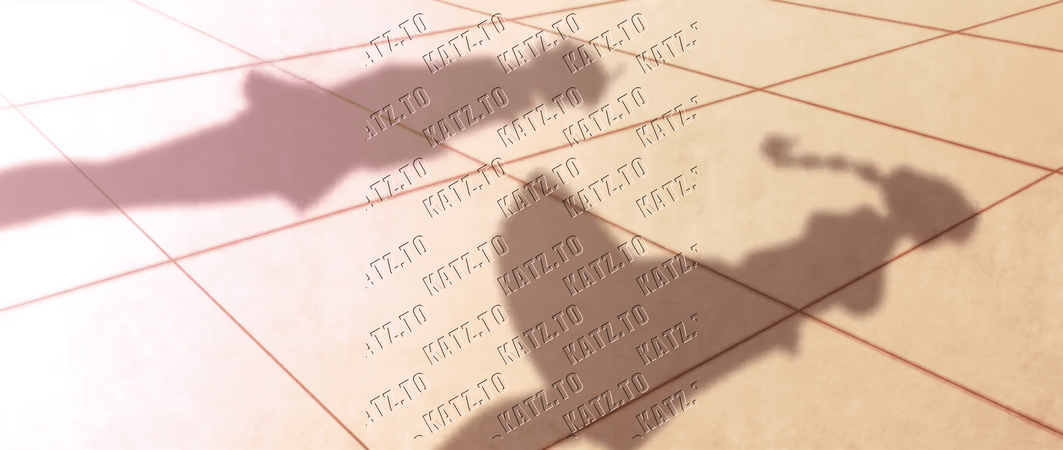
In this moment we’re told that vampires don’t cast shadows, and so this shot provides a foreshadowing of Araragi's fate, that is beautifully payed off when Hanekawa and Araragi’s meet again in Part II:
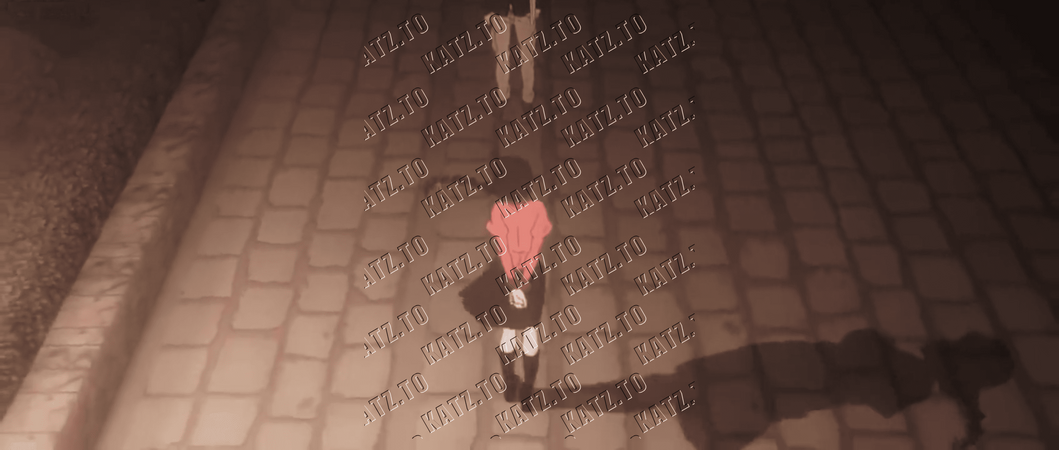
And we have to talk about the music. My god, Satoru Kōsaki’s soundtrack is masterful. Tracks like Negotiator or Friend heavily build this jazzy style that evoke the classic noir genre. Meanwhile violin and string pieces masterfully build tension that capture the iconic horror sound in pieces like On the Verge of Death or otherwise feel perfectly tragic in their own right like Blood.
And not to forget the heart-wrenching main theme of the movies, constantly being referred in the rest of the music. Etolie et Toi makes for such an incredible closing track for the trilogy. Why does French sound so romantic yet so sad?
From an actual technological perspective there are a number of things the films utilise to make such striking visuals. The most notable are, of course, the CGI work and the rotoscoping. The rotoscoping makes for unbelievably smooth character animation, the characters move with such fluidity, unlike anything hand-drawn animation can achieve alone.
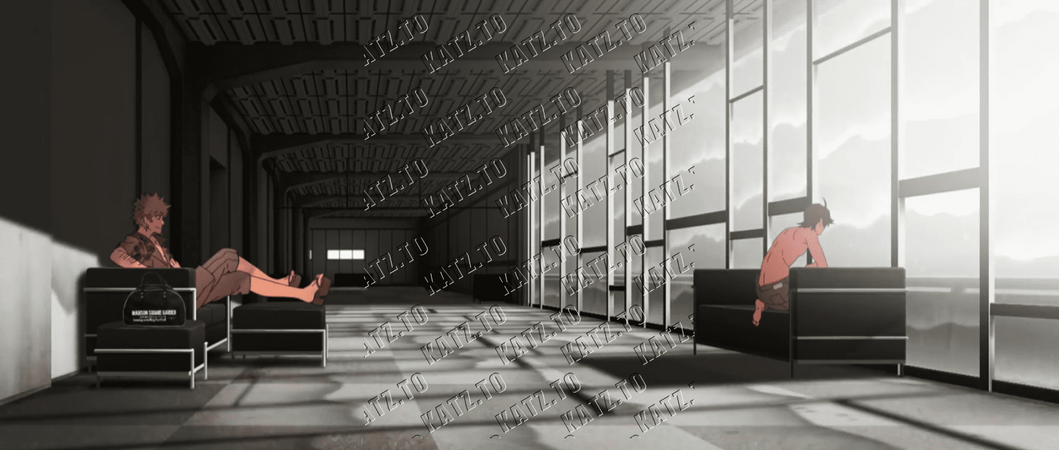
And these characters live within a CGI rich environment. Often, CGI in anime can have the effect of sticking out like a sore thumb. This tends to be because CGI is used to render a handful of 3D objects throughout a show or movie, often those that move through the scene in a way that would be incredible difficult and time-consuming to animate by hand. In Kizumonogatari, the 3D objects animated with CG are, well, most of them. It doesn’t stick out because nearly all of the non-character animation is CGI. For films that so heavily utilise light and shadows, the CGI also allows for some incredibly lit shots that you’d only really be able to do in live-action film otherwise.
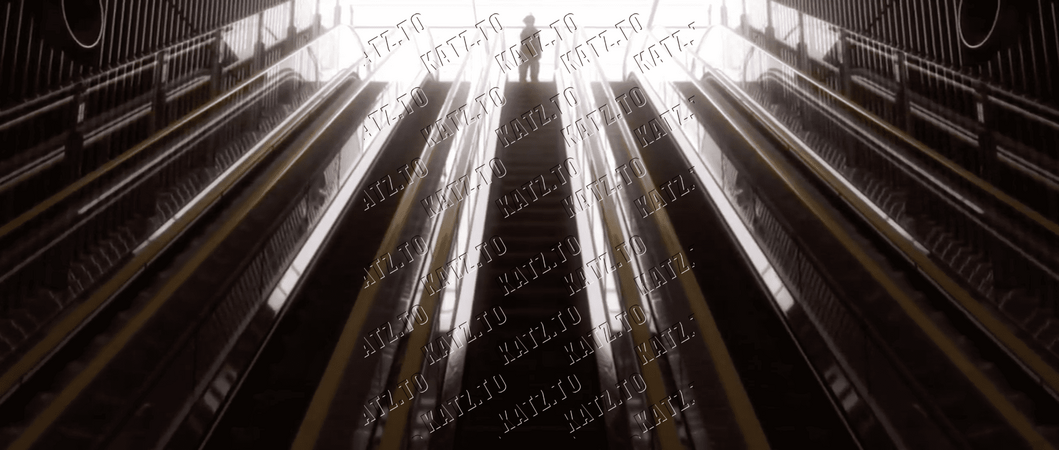
Together, the CGI and rotoscoping create a very interesting visual style. At worst, the two can feel slightly disjointed. However at its best, it allows Kizumonogatari feels so rich and detailed. The settings feel complex and real while the characters leap off the screen. My personal favourite example of where this works so well is the nerve wracking sequence of Araragi following the trail of blood through the winding passages of the train station to find Kiss-Shot’s body. By using both rotoscoping and CGI, this scene is able to easily exploit camera movement and it allows for some incredible close-up shots of Araragi walking, which keep the forward moment of the scene while also showing Araragi horrified face.
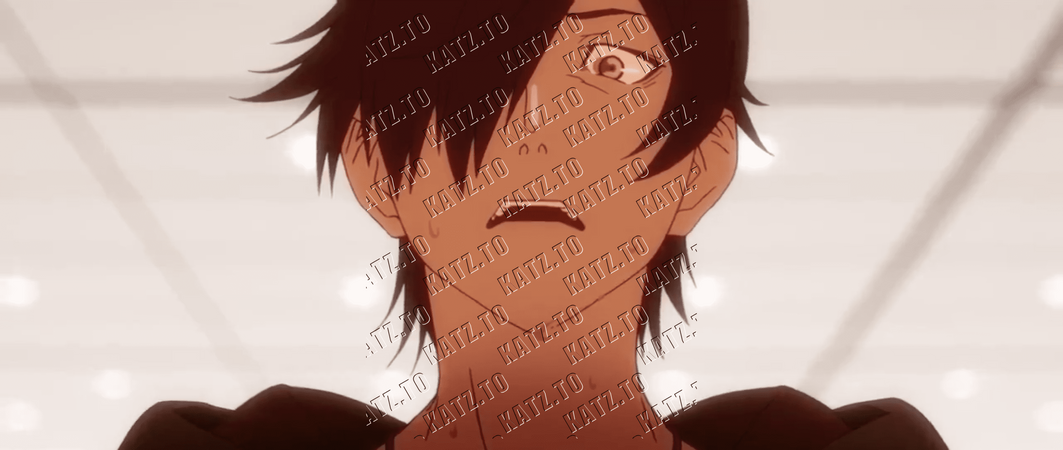
The films explore some really interesting themes, deploy clever subversions and uses of the vampire genre and are fantastically animated and scored to boot. There is no denying how pretty these films are; they ooze style. And this time, I also think it told a damn good story. It’s probably the least Monogatari Monogatari has ever been, but it works so damn well.
BONUS SCENE
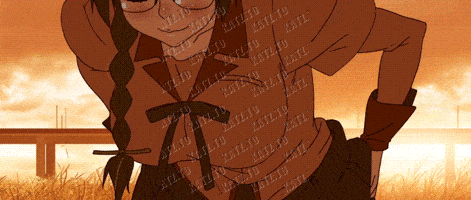
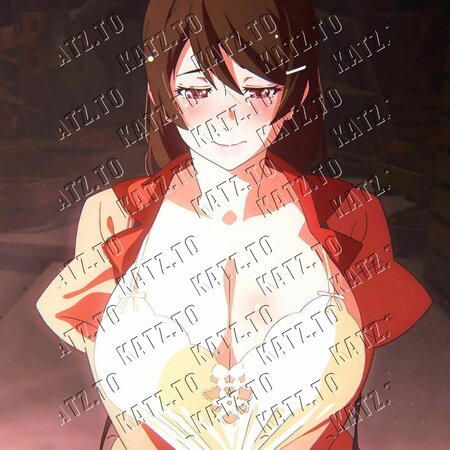
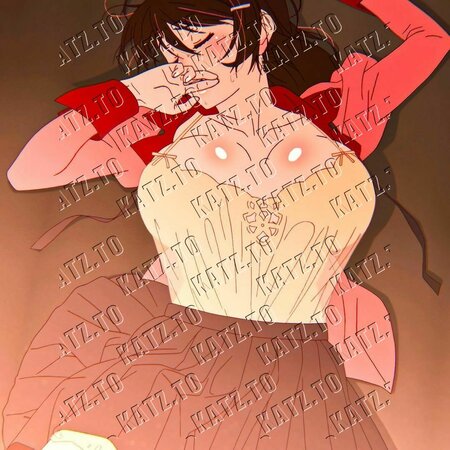
Kizu is creative expressionism in every sense of the word. Whether you enjoy its style is very much dependent on you. It captures a familiar coming-of-age narrative through the use of blood, lust, and superstition - playing into the horrors of navigating through young adult life. Its comedic insanity, brutal gore, and hornier-than-thou approach are matched by a surgically assured sense of freedom. As problematic of a character as he is, Araragi is so superbly developed, and his arc is masterfully woven into the story. A world so creatively weird and different as this will always draw me in, which is why I think it’s a masterpiece - in the most subjectively objective way possible.
Overall Kizumonogatari is a blast. It's got an engaging and beautiful story, intense action scenes, and fanservice up the wazoo. It sets the stage beautifully for the rest of the Monogatari series. Fans of Shinobu will get plenty of cute and badass moments from everybody's favorite vampire queen. Fans of Hanekawa get some spicy fanservice scenes as well as more cutesy bonding moments with her and Koyomi. As for the lead character himself, we see his transformation from a nihilistic loner to the good guy we know him as.
"If you were to die tomorrow, I'd be fine with tomorrow being the last day of my life."
"If you were to live through today, I will also chose to live through today."
Monogatari series watch order

